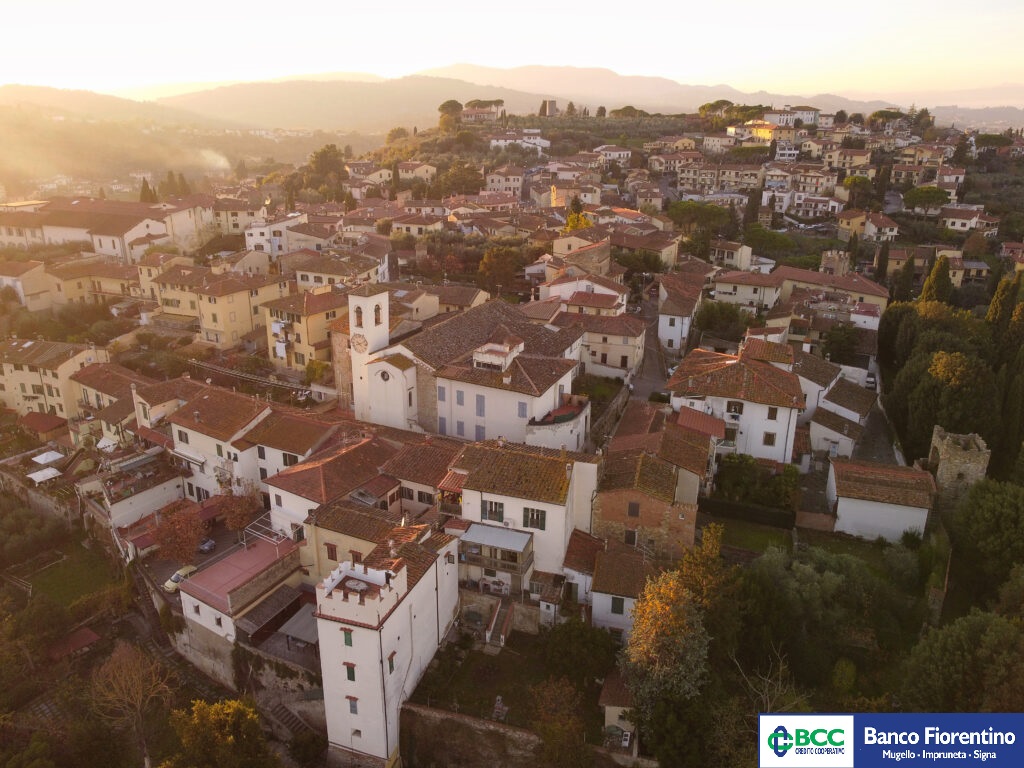
Pista ciclabile
Fra Signa e Firenze è possibile percorrere un facile percorso ciclabile che, costeggiando l’Arno, unisce il Parco delle Cascine con il Parco dei Renai a Signa.
La pista ciclabile è ampia, su strada bianca e facilmente percorribile; inoltre, è adatta a tutti, anche ai bambini.
L’itinerario completo ha una lunghezza di circa 11 km, con dislivelli minimi (in salita dislivello massimo di 21 metri e in discesa di 29). Partendo da Firenze, si snoda dal Parco delle Cascine, attraversa Piazzale Vittorio Veneto, il Viadotto dell’Indiano, la Passerella sul Mugnone, passa sotto il viadotto dell’A1 e quindi raggiunge Signa e il Parco dei Renai.
Dal mese di aprile 2022 è accessibile la passerella ciclopedonale che attraversa il fiume Arno e collega la stazione ferroviaria di San Donnino (adiacente alla pista ciclabile), con l’abitato di Badia a Settimo, nel territorio di Scandicci. Si aggiunge, quindi, la possibilità di fare una deviazione al percorso per visitare l’antica Badia di San Salvatore a Settimo, che è situata a breve distanza.
Per approfondimenti scarica la mappa delle piste ciclabili intorno a Firenze.
Anello del Rinascimento
Uno straordinario percorso a piedi, un itinerario storico-artistico unico, pensato per rivivere i fasti del Rinascimento in quei borghi e paesi che, satelliti di Firenze, non mancarono di risentire della spinta culturale e innovativa che proveniva dalla capitale della famiglia de’ Medici.
Non si può parlare di Rinascimento senza fare riferimento a Firenze, che ne fu la “culla”, e alla figura di Lorenzo de’ Medici, detto Il Magnifico, personaggio centrale del Quattrocento, figura insostituibile di mecenate, ma anche di diplomatico e letterato.
Con molta probabilità, non ci sarebbero stati i vari Della Mirandola, Poliziano, Michelangelo, Botticelli, Pollaiolo, Verrocchio e il da Sangallo, se non ci fosse stato, alle loro spalle, Il Magnifico a reggerne le sorti, anche sotto forma di sovvenzioni in denaro. Inevitabilmente, il Rinascimento ha finito così per identificarsi con Firenze e le opere di questi illustri pittori, scultori e letterati, che operarono non solo nel capoluogo toscano, ma anche nei borghi e paesi limitrofi. Partendo da queste basi, l’Anello del Rinascimento, percorso di trekking non rappresenta solo un viaggio escursionistico alla scoperta di paesaggi e di una natura suggestivi, ma è anche un modo nuovo per riappropriarsi degli aspetti storici e artistici rinascimentali che gravitano intorno a quello che, per il caso, è stato posto come epicentro del percorso: la Cupola del Duomo di Firenze, simbolo della città.
L’Anello del Rinascimento è un itinerario di lunga percorrenza su viabilità di interesse provinciale. Nella sua versione attuale, si compone di un anello principale (8 tappe per ca 130 km) cui si aggiungono 5 varianti e 3 aggiunte, per un totale di 250 km complessivi di percorrenza, che possono essere spezzati in moduli.
Per approfondimenti, scarica la mappa dell’interno percorso.
TOURS AND ROUTES
Bicycle lane
Between Signa and Florence it is possible to follow an easy cycle path which, running alongside the Arno, connects the Cascine Park with the Renai Park in Signa. The cycle path is wide, on a dirt road and easily passable; furthermore, it is suitable for everyone, even children. The complete itinerary is approximately 11 km long, with minimal height differences (maximum height difference uphill of 21 meters and downhill of 29). Starting from Florence, it winds from the Cascine Park, crosses Piazzale Vittorio Veneto, the Indian Viaduct, the Passerella sul Mugnone, passes under the A1 viaduct and then reaches Signa and the Renai Park. Since April 2022, the cycle/pedestrian walkway that crosses the Arno river and connects the San Donnino railway station (adjacent to the cycle path) with the town of Badia a Settimo, in the Scandicci area, has been accessible. We therefore add the possibility of making a detour to the route to visit the ancient Badia of San Salvatore a Settimo, which is located a short distance away.
For further information, download the map of the cycle paths around Florence.
Renaissance Ring
An extraordinary walking route, a unique historical-artistic itinerary, designed to relive the glories of the Renaissance in those villages and towns which, satellites of Florence, did not fail to feel the cultural and innovative push that came from the capital of the Medici family. We cannot talk about the Renaissance without referring to Florence, which was its “cradle”, and to the figure of Lorenzo de’ Medici, known as Il Magnifico, a central figure of the fifteenth century, an irreplaceable figure of patron, but also of diplomat and man of letters. Most likely, there would not have been the various Della Mirandola, Poliziano, Michelangelo, Botticelli, Pollaiolo, Verrocchio and da Sangallo, if there had not been, behind them, Il Magnifico to govern their fortunes, also in the form of grants in money. Inevitably, the Renaissance thus ended up being identified with Florence and the works of these illustrious painters, sculptors and writers, who worked not only in the Tuscan capital, but also in the neighboring villages and towns. Starting from these bases, the Renaissance Ring, a trekking route, does not only represent a hiking journey to discover suggestive landscapes and nature, but is also a new way to reclaim the historical and artistic aspects of the Renaissance that gravitate around what , by chance, was placed as the epicenter of the route: the Dome of the Cathedral of Florence, symbol of the city. The Renaissance Ring is a long-distance itinerary on roads of provincial interest. In its current version, it consists of a main ring (8 stages for approximately 130 km) to which are added 5 variants and 3 additions, for a total of 250 km in total, which can be broken into modules.
For further information, download the map of the entire route.
